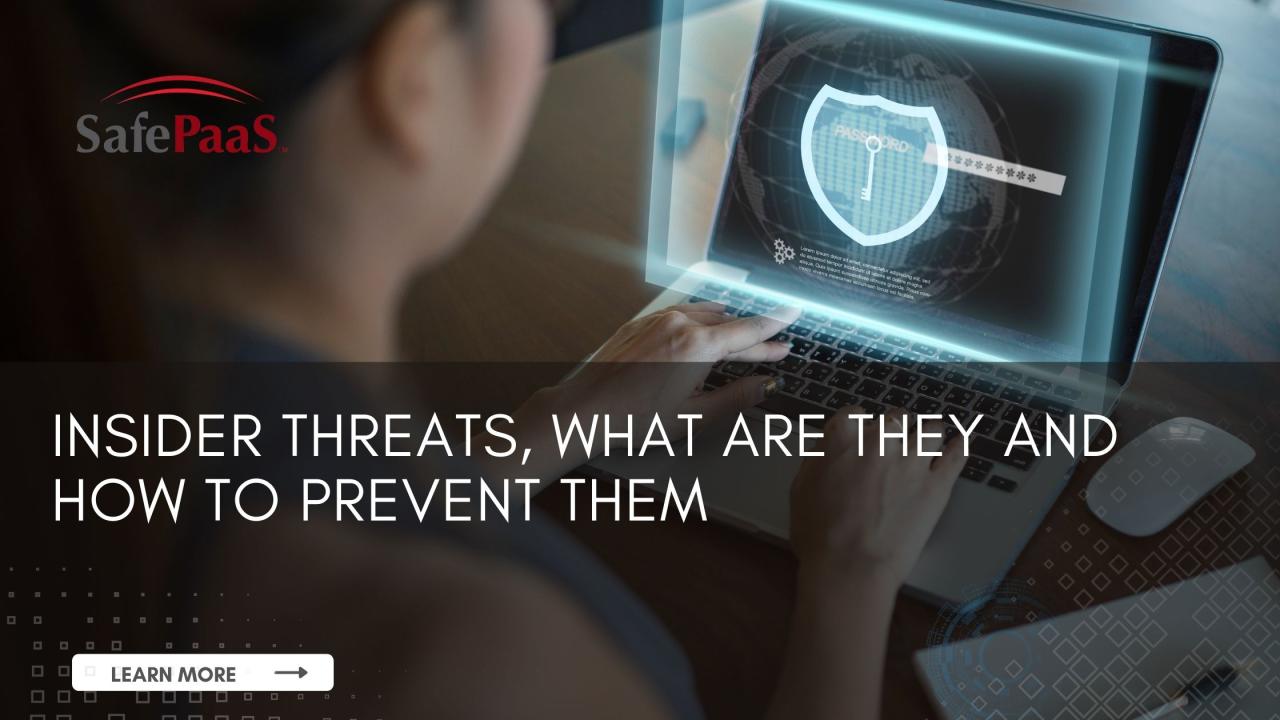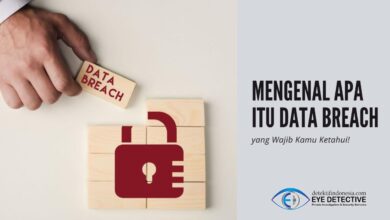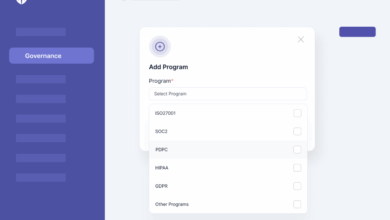
A Briefing on What We Know Now on Insider Threats
A briefing on what we know now on insider threats sets the stage for a fascinating exploration of a critical security issue. We’ll delve into the various types of insider threats, from malicious actors to negligent employees, and examine the devastating consequences they can unleash. We’ll explore the vulnerabilities within organizations that make them susceptible, and discuss proven methods for detection and prevention.
This isn’t just about technical solutions; we’ll also look at the crucial human element – the psychology behind insider threats and the importance of fostering a strong security culture.
This briefing will cover everything from identifying weak points in your organizational structure to understanding the legal ramifications of a data breach. We’ll dissect real-world case studies, analyzing what went wrong and how things could have been prevented. Finally, we’ll look towards the future, considering the impact of emerging technologies and the challenges posed by the increasingly remote workforce.
Defining Insider Threats

Insider threats represent a significant and often overlooked risk to organizations of all sizes. They stem from individuals with legitimate access to an organization’s systems, data, or physical assets who intentionally or unintentionally compromise security. Understanding the multifaceted nature of these threats is crucial for effective mitigation.Insider threats are not easily categorized into simple “good” or “bad” actors.
Instead, they exist on a spectrum of intent and impact, making identification and prevention challenging. The consequences can range from minor inconveniences to catastrophic data breaches and business disruption.
Categories of Insider Threats
The classification of insider threats often hinges on the actor’s intent and level of awareness. Malicious insiders actively seek to harm the organization, often motivated by financial gain, revenge, or ideological reasons. Negligent insiders, on the other hand, unintentionally cause damage due to carelessness, lack of training, or simply being unaware of security protocols. Finally, compromised insiders are individuals whose accounts or devices have been hijacked by external actors, unwittingly facilitating malicious activity.
These categories aren’t mutually exclusive; an individual might transition between them over time.
Spectrum of Potential Damage
The damage caused by insider threats varies significantly. At the lower end of the spectrum, a negligent employee might accidentally expose sensitive data through an insecure email attachment. More serious incidents involve the theft of intellectual property, leading to competitive disadvantage or financial losses. At the most extreme, malicious insiders can orchestrate sophisticated attacks, causing widespread data breaches, system sabotage, or even physical damage to infrastructure.
So, the briefing on insider threats highlighted the critical need for robust security measures. It’s fascinating how much of our data relies on applications, and building secure ones efficiently is key; that’s why I found the article on domino app dev the low code and pro code future so relevant. Understanding the future of app development directly impacts our ability to mitigate insider threats by creating secure, well-maintained systems.
Ultimately, strengthening our app security is a crucial part of the overall insider threat strategy.
The 2013 Target data breach, for example, involved a third-party vendor’s compromised credentials, highlighting the vulnerability introduced by trusted insiders. The impact of such breaches can extend far beyond immediate financial losses, damaging reputation and eroding customer trust.
Motivations Behind Insider Threats
Understanding the motivations behind insider threats is key to developing effective preventative measures. Financial gain is a common driver, with employees potentially stealing data for sale or using their access to commit fraud. Revenge, often stemming from perceived injustices or workplace conflicts, can also lead to malicious actions. Ideological motivations, such as a belief in a particular cause, can drive insiders to leak sensitive information or disrupt operations.
Finally, some insiders might act out of simple negligence or a lack of awareness regarding security best practices. Identifying these underlying motivations can help organizations tailor their security strategies to address specific vulnerabilities.
Identifying Vulnerable Areas
Insider threats represent a significant risk to any organization, regardless of size or industry. Understanding the vulnerabilities that allow these threats to materialize is crucial for effective mitigation. This section explores common entry points, organizational weaknesses, and real-world examples to illustrate the potential damage.Identifying common entry points and organizational weaknesses is the first step towards building a robust defense against insider threats.
These vulnerabilities often stem from a combination of technical flaws, procedural gaps, and human error. Understanding these factors allows organizations to proactively strengthen their security posture.
Common Entry Points Exploited by Insider Threats
Insider threats often exploit existing access privileges or leverage vulnerabilities in organizational systems to gain unauthorized access or cause damage. These entry points can range from simple password breaches to sophisticated exploitation of system weaknesses. For example, weak or easily guessable passwords, coupled with a lack of multi-factor authentication, provide easy access for malicious insiders. Similarly, unpatched software vulnerabilities or inadequate access controls can allow insiders to escalate privileges and compromise sensitive data.
Organizational Weaknesses Increasing Vulnerability to Insider Threats
Several organizational weaknesses significantly increase vulnerability to insider threats. These include inadequate background checks during hiring, insufficient employee training on security protocols, a lack of robust monitoring and detection systems, and poor management of privileged accounts. A culture of complacency, where security protocols are not taken seriously, further exacerbates the risk. For instance, an organization that fails to conduct thorough background checks on employees might inadvertently hire individuals with malicious intent.
Hypothetical Organizational Structure Highlighting Potential Vulnerabilities
Consider a hypothetical organization with a hierarchical structure. The CEO has complete access to all systems, while department heads have access to their respective departments’ data. Employees have access to specific applications and data related to their roles. A vulnerability arises if a disgruntled employee in the IT department with elevated privileges decides to leak sensitive data or sabotage the system.
The lack of strong access control, combined with the absence of robust monitoring and auditing, makes this scenario highly plausible. Furthermore, if the organization lacks a clear incident response plan, the damage caused by such an insider threat could be significantly amplified.
Real-World Scenarios Illustrating Successful Insider Threat Attacks
Numerous real-world examples demonstrate the devastating impact of insider threats. The Edward Snowden case, where a former NSA contractor leaked classified information, highlighted the significant damage a single disgruntled insider can inflict. Similarly, several high-profile data breaches have been attributed to insiders abusing their access privileges for personal gain or malicious intent. These incidents underscore the critical need for robust security measures and a comprehensive insider threat program.
Detection and Prevention Methods
Insider threats represent a significant risk to any organization, demanding a multi-layered approach to detection and prevention. Effective strategies combine proactive monitoring with reactive incident response, leveraging technology and robust security policies to minimize vulnerabilities. This section explores various methods for identifying and mitigating these threats.
Proactive Detection Methods
Proactive detection focuses on identifying potential threats before they materialize into incidents. This involves continuous monitoring of user activity and system behavior to identify anomalies that might indicate malicious intent or negligence. This approach is crucial for early intervention and prevention.
Several methods contribute to proactive detection. User and Entity Behavior Analytics (UEBA) solutions analyze user activity patterns to detect deviations from established baselines. For instance, a sudden increase in data access outside normal working hours or unusual file transfers could trigger an alert. Security Information and Event Management (SIEM) systems aggregate logs from various sources to provide a holistic view of security events, enabling the detection of suspicious patterns across different systems.
Data Loss Prevention (DLP) tools monitor data movement, identifying and blocking attempts to exfiltrate sensitive information. Regular security audits, including vulnerability assessments and penetration testing, also play a crucial role in identifying potential weaknesses that could be exploited by insiders.
Reactive Detection Methods
Reactive detection methods focus on identifying insider threats after an incident has occurred. This typically involves investigating security alerts, analyzing audit logs, and reviewing incident reports to identify the root cause and extent of the damage. While reactive, these methods are critical for understanding the attack vector and preventing future incidents.
Forensic analysis of compromised systems is a key component of reactive detection. This involves meticulously examining system logs, memory dumps, and network traffic to reconstruct the attack timeline and identify the attacker’s techniques. Incident response plans, outlining procedures for handling security breaches, are essential for effective reactive detection and mitigation. Post-incident reviews are crucial for identifying gaps in security controls and improving future prevention efforts.
These reviews should analyze the incident’s impact, the effectiveness of the response, and areas for improvement in security policies and procedures.
Access Control Measures
Implementing robust access control measures is fundamental to mitigating insider threats. The principle of least privilege, granting users only the access necessary to perform their job functions, significantly limits the potential damage an insider can inflict. Multi-factor authentication (MFA) adds an extra layer of security, making it harder for unauthorized individuals to access accounts, even if they obtain passwords.
Regular access reviews, verifying that users still require their assigned access privileges, help identify and revoke unnecessary permissions. Strong password policies and regular password changes are also essential to prevent unauthorized access. Data encryption protects sensitive information, even if it falls into the wrong hands. Finally, regular security awareness training educates employees about security risks and best practices, reducing the likelihood of unintentional insider threats.
Comparison of Security Technologies
Various security technologies contribute to insider threat detection. UEBA solutions excel at detecting anomalous behavior, while SIEM systems provide comprehensive security event monitoring. DLP tools focus on preventing data loss, and Security Orchestration, Automation, and Response (SOAR) platforms automate incident response processes. Each technology has its strengths and weaknesses; a layered approach, combining multiple technologies, is generally most effective.
For example, a UEBA system might detect suspicious login attempts, triggering an alert in the SIEM system, which in turn might initiate an automated response through a SOAR platform.
Responding to a Suspected Insider Threat Incident
A well-defined incident response plan is crucial for effectively handling suspected insider threats. The following table Artikels a step-by-step procedure:
| Step | Action | Responsibility | Timeline |
|---|---|---|---|
| 1 | Identify and contain the threat. Isolate affected systems and accounts. | Security Team/Incident Response Team | Immediately |
| 2 | Preserve evidence. Collect logs, system images, and other relevant data. | Forensics Team | Within 24 hours |
| 3 | Investigate the incident. Determine the extent of the damage and the root cause. | Investigative Team | Within 72 hours |
| 4 | Remediate the vulnerability. Address the root cause of the incident and implement preventative measures. | Security Team/IT Team | Ongoing |
| 5 | Communicate with stakeholders. Inform relevant parties about the incident and its impact. | Communications Team/Management | As needed |
| 6 | Conduct a post-incident review. Analyze the incident to identify areas for improvement in security policies and procedures. | Security Team/Management | Within 30 days |
The Role of Human Factors

Insider threats, as we’ve discussed, represent a significant risk to any organization. While technological safeguards are crucial, the human element remains the most vulnerable link in the security chain. Understanding the psychological factors driving insider threats is paramount to effective prevention and mitigation. Neglecting the human aspect leads to incomplete security strategies, leaving organizations exposed to risks that technology alone cannot address.Psychological factors play a significant role in the actions of insider threat actors.
Stress, dissatisfaction, perceived injustice, and even simple negligence can contribute to actions that compromise organizational security. These factors often interact, creating a complex web of motivations that can lead to accidental or intentional data breaches, sabotage, or theft of intellectual property. Understanding these underlying psychological drivers allows for a more proactive and nuanced approach to security.
Psychological Factors Contributing to Insider Threats
A range of psychological factors can influence an individual’s behavior, increasing the likelihood of becoming an insider threat. For instance, employees experiencing high levels of stress, perhaps due to workload pressures or personal issues, might make careless mistakes, increasing the risk of accidental data leaks. Feelings of resentment or injustice, stemming from perceived unfair treatment or lack of recognition, can lead to deliberate acts of sabotage or data theft.
Furthermore, a sense of entitlement, often fueled by a belief that one’s contributions are undervalued, can contribute to the unauthorized access or disclosure of sensitive information. Finally, even seemingly benign actions, such as neglecting security protocols due to a lack of awareness or perceived inconvenience, can have significant consequences. Addressing these psychological factors requires a multi-faceted approach that considers both individual needs and organizational culture.
Employee Awareness Training: A Critical Component of Insider Threat Prevention
Effective employee awareness training is not merely a compliance exercise; it’s a cornerstone of a robust insider threat prevention strategy. Such training should go beyond simply highlighting policies and procedures. It should aim to foster a security-conscious culture where employees understand their role in protecting organizational assets and feel empowered to report suspicious activities. A successful training program should incorporate interactive modules, realistic scenarios, and regular refresher courses to maintain engagement and reinforce key concepts.
For example, a scenario-based module could present employees with a situation where they receive a suspicious email and guide them through the appropriate response.
Building a Strong Security Culture, A briefing on what we know now on insider threats
Building a strong security culture involves more than just implementing technical controls and conducting training. It requires a fundamental shift in organizational mindset, where security is viewed not as an afterthought, but as an integral part of the company’s values and operations. This involves open communication, fostering a culture of trust and psychological safety, where employees feel comfortable reporting concerns without fear of reprisal.
Leaders must champion security initiatives and visibly demonstrate their commitment to protecting organizational assets. Regular security awareness campaigns, incorporating interactive elements and real-world examples, can help reinforce key messages and keep security top of mind. Furthermore, establishing clear reporting mechanisms and ensuring that reported incidents are investigated promptly and thoroughly is crucial for building trust and demonstrating that security concerns are taken seriously.
Training Program Module: Identifying and Reporting Suspicious Activities
This module will focus on practical skills for identifying and reporting suspicious activities. It will begin by defining what constitutes suspicious activity, providing clear examples such as unusual login attempts, unauthorized access requests, or attempts to bypass security protocols. The module will then Artikel the appropriate reporting procedures, emphasizing the importance of timely reporting and providing various channels for reporting, including dedicated hotlines, email addresses, and internal reporting systems.
Participants will learn how to gather relevant information, such as timestamps, IP addresses, and user details, to aid in the investigation. Finally, the module will address the importance of protecting whistleblowers and ensuring that reports are handled confidentially and without retaliation. The module will include interactive exercises and case studies to reinforce learning and enhance practical application.
Legal and Regulatory Considerations

Navigating the complex legal landscape surrounding insider threats is crucial for organizations of all sizes. Data breaches caused by malicious or negligent insiders can result in significant financial losses, reputational damage, and legal repercussions. Understanding the relevant regulations and best practices for compliance is paramount to mitigating risk and ensuring business continuity.The legal ramifications of insider threats and data breaches are substantial and far-reaching.
Companies face potential civil lawsuits from affected individuals and businesses, regulatory fines, and criminal prosecution depending on the severity and nature of the breach. The cost of remediation, including legal fees, forensic investigations, and notification costs, can be crippling. Furthermore, the loss of sensitive data can severely damage an organization’s reputation, impacting its ability to attract and retain customers and partners.
Data Breach Notification Laws
Data breach notification laws vary significantly across jurisdictions, dictating the timeframe within which organizations must notify affected individuals and authorities of a data breach. For example, the California Consumer Privacy Act (CCPA) and the European Union’s General Data Protection Regulation (GDPR) impose stringent notification requirements and hefty penalties for non-compliance. Understanding these specific requirements for each region where an organization operates is critical.
Failure to comply with these laws can lead to substantial fines and legal action. The GDPR, for instance, can levy fines up to €20 million or 4% of annual global turnover, whichever is greater. This highlights the significant financial risks associated with non-compliance.
Relevant Regulations and Compliance Standards
Several regulations and compliance standards directly address insider threat management. These include, but are not limited to, the GDPR, the CCPA, the Health Insurance Portability and Accountability Act (HIPAA) in the United States (for healthcare data), and the Payment Card Industry Data Security Standard (PCI DSS) for organizations handling credit card information. These regulations often mandate specific security controls, data protection measures, and incident response plans.
Compliance requires a proactive approach, encompassing risk assessments, employee training, access control measures, and robust monitoring systems. Failure to implement adequate security controls can result in severe penalties and reputational harm.
Comparison of Legal Responses Across Jurisdictions
Legal responses to insider threats vary considerably across different jurisdictions. Some countries have specific legislation addressing insider threats, while others rely on general criminal and civil laws. The penalties for data breaches and non-compliance also differ significantly. For instance, the US generally relies on a patchwork of state and federal laws, whereas the EU adopts a more harmonized approach with the GDPR.
Organizations with a global presence must navigate a complex web of legal requirements, tailoring their security practices and incident response plans to each jurisdiction’s specific legal framework. This often requires engaging legal counsel with expertise in international data protection laws.
Best Practices for Regulatory Compliance
Effective insider threat management requires a multifaceted approach. To ensure compliance with relevant regulations, organizations should implement the following best practices:
- Conduct regular risk assessments to identify vulnerabilities and potential insider threats.
- Implement strong access control measures, including least privilege principles and multi-factor authentication.
- Develop and implement comprehensive data loss prevention (DLP) policies and technologies.
- Provide regular security awareness training to employees to educate them about insider threats and their responsibilities.
- Establish clear incident response plans to effectively manage and mitigate data breaches.
- Regularly review and update security policies and procedures to adapt to evolving threats and regulations.
- Maintain thorough documentation of security controls and compliance efforts.
- Conduct regular audits to ensure compliance with relevant regulations and standards.
- Establish a clear chain of command and communication protocols for handling security incidents.
- Invest in robust security monitoring and threat detection technologies.
Illustrative Case Studies: A Briefing On What We Know Now On Insider Threats
Understanding insider threats requires examining real-world examples. Analyzing these cases reveals the vulnerabilities exploited, the devastating consequences, and the preventative measures that could have mitigated the damage. This section will delve into a significant insider threat incident, detailing its progression and the lessons learned.
The case of Edward Snowden, a former Central Intelligence Agency (CIA) employee and contractor for the National Security Agency (NSA), serves as a stark example of the potential damage caused by insider threats. Snowden’s unauthorized disclosure of classified information in 2013 exposed vast government surveillance programs, impacting national security and international relations. The scale and sensitivity of the leaked data resulted in significant reputational damage to the US government and sparked global debates about privacy and government oversight.
The Snowden Case: Timeline of Events
A visual representation of the Snowden case timeline would show a series of events unfolding over several months. It would begin with Snowden’s access to highly classified NSA data during his employment. The timeline would then progress to show the period where Snowden downloaded the data, likely in a surreptitious manner, potentially utilizing his authorized access and possibly exploiting vulnerabilities in data security protocols.
A key point on the timeline would mark the date Snowden fled the United States to Hong Kong, initiating the global dissemination of the classified information. The timeline would continue with the public release of the data through various media outlets, highlighting the significant media attention and global impact. Finally, the timeline would conclude with Snowden’s asylum in Russia and the ongoing legal and political ramifications of his actions.
Mitigation Strategies in the Snowden Case
Several preventative measures could have significantly reduced the impact of Snowden’s actions. These include stricter access control policies, implementing robust data encryption, and enhanced monitoring of user activity, especially concerning unusually large data downloads or access to sensitive information outside of normal working hours. More rigorous background checks and psychological evaluations during the hiring process might have helped identify potential risks.
Furthermore, a more robust whistleblower protection program could have provided Snowden with a safer and more legal avenue to report his concerns, potentially preventing the unauthorized data disclosure.
Emerging Trends and Future Threats
The landscape of insider threats is constantly evolving, driven by technological advancements, changing work patterns, and the increasing sophistication of malicious actors. Understanding these emerging trends is crucial for organizations to proactively defend against future attacks. This section will explore key trends, the impact of AI, and the challenges presented by remote work.The sophistication of insider threat tactics is increasing, moving beyond simple data theft to encompass more complex and insidious attacks.
We’re seeing a rise in the use of social engineering techniques to manipulate employees into divulging sensitive information or granting unauthorized access. Furthermore, the use of automation tools by malicious insiders allows for larger-scale data exfiltration and damage than ever before. This requires a more proactive and intelligent approach to threat detection and prevention.
AI and Automation’s Impact on Insider Threat Detection and Prevention
Artificial intelligence and automation are transforming the way organizations approach insider threat management. AI-powered security information and event management (SIEM) systems can analyze vast amounts of data to identify anomalous behavior patterns that might indicate malicious activity. Machine learning algorithms can be trained to detect subtle deviations from normal user behavior, flagging potential insider threats before they escalate. For example, an AI system might detect an employee accessing sensitive data at unusual times or downloading an unusually large amount of information, triggering an alert for further investigation.
Automation can streamline the response process, automating tasks such as isolating compromised accounts or initiating incident response procedures. However, the reliance on AI also presents challenges, including the need for robust data sets to train algorithms effectively and the potential for AI systems to be bypassed by sophisticated adversaries.
Challenges Posed by Remote Work Environments
The widespread adoption of remote work has significantly increased the complexity of managing insider threats. The distributed nature of remote workforces makes it more difficult to monitor employee activity and enforce security policies effectively. The lack of physical controls and the reliance on personal devices increase the attack surface and the potential for data breaches. For instance, an employee working from home might be more susceptible to phishing attacks or malware infections, potentially compromising sensitive company data.
Organizations need to implement robust remote access security measures, including multi-factor authentication, endpoint protection, and regular security awareness training, to mitigate these risks. Moreover, clear policies and procedures regarding data handling and remote work security are essential. A strong emphasis on security awareness training tailored to the remote work environment is crucial to mitigate the increased risk.
Conclusive Thoughts
Understanding insider threats isn’t just about implementing the latest security software; it’s about building a culture of awareness and responsibility. By combining robust security measures with a proactive approach to employee training and a keen awareness of organizational vulnerabilities, we can significantly reduce the risk of devastating insider attacks. This briefing has provided a framework for understanding the problem and taking the necessary steps to mitigate the risk.
Remember, the human element is just as crucial as the technology. Stay vigilant, stay informed, and stay safe.
FAQ Compilation
What is the difference between a malicious and a negligent insider threat?
A malicious insider threat involves an individual intentionally causing harm, while a negligent insider threat results from carelessness or a lack of awareness, unintentionally leading to a security breach.
Can insurance cover losses from insider threats?
Yes, many cyber insurance policies cover losses resulting from insider threats, but coverage varies depending on the policy and the specific circumstances of the incident. It’s crucial to review your policy carefully.
How can I effectively train employees to identify and report suspicious activity?
Implement regular, engaging training programs using various methods (e.g., interactive modules, simulations, phishing exercises). Emphasize reporting mechanisms and ensure anonymity where appropriate to encourage reporting.
What are some common signs of an insider threat?
Unusual access patterns, attempts to bypass security protocols, unusual data transfers, changes in employee behavior, and complaints from colleagues are all potential red flags.





